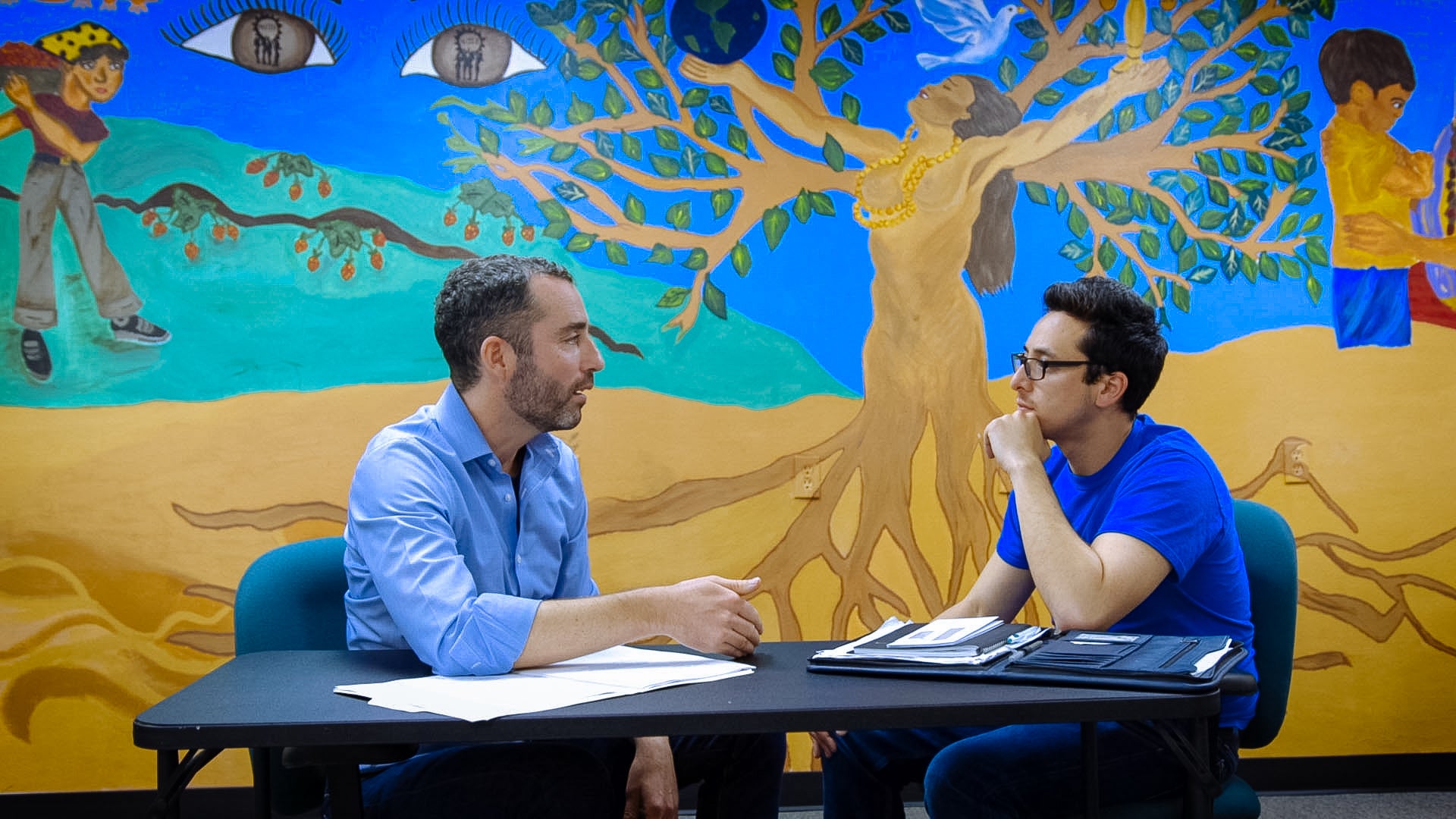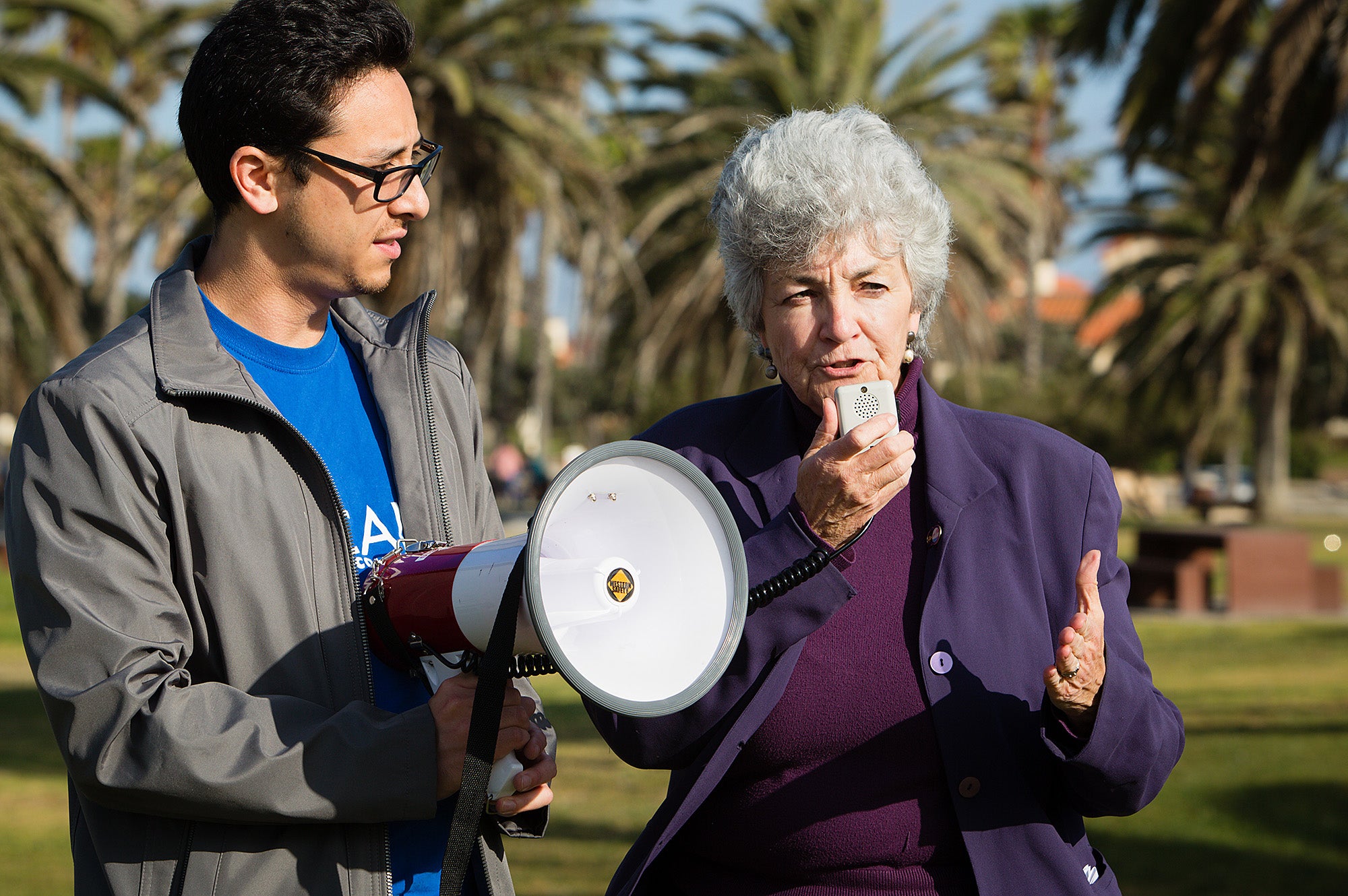May 13, 2024
A Fossil Fuel Company Tried to Put a Dirty Gas Plant on a Beautiful Coastline. It Failed.
Earthjustice’s work in energy proceedings in states like California is driving the nation’s clean energy transition.


The city of Oxnard, California, has long been known as one of the strawberry capitals of the world. But the coastal town, which lies between the more affluent cities of Santa Barbara and Malibu, has another claim to fame, one that’s far less sweet. Its community, made up predominantly of low-income, immigrant residents, has some of the worst asthma rates in the country.
In 2018, local activists, students, and community leaders, together with Earthjustice, successfully pushed California’s regulators to shut down a proposal to build a hulking natural gas plant that would only worsen local air quality.
Leveling the Playing Field
In public utility commissions , Earthjustice uses our skills as litigators and vast experience on energy issues to highlight the costs of coal and gas, and make the case for affordable clean energy.
Even better, the four-year-long fight led to California’s grid operator approving a clean energy alternative to the dirty energy plant.
This victory shows the potential of Earthjustice’s work in state public utility commissions to speed the transition to 100 percent clean energy both in California — and around the country.

The fight to shut down a proposed gas-fired power plant project in Oxnard, the largest city along California’s iconic Central Coast, all started in the summer of 2014. NRG Energy, a powerful energy corporation, proposed a 262-megawatt gas plant known as Puente that, if built, would join three others already marring Oxnard’s coast. Instead of sandcastles and beach blankets, Oxnard’s coastline is littered with these foreboding metal structures, complete with tall smokestacks discharging toxic air pollutants, and hollowed out ponds filled with wastewater. Nearby lies a Superfund site filled with toxic slag leftover from a metals recycling facility.
In addition to the industrialization of its beaches, Oxnard also bears the brunt of the toxic pesticide use that comes with being an agricultural powerhouse. According to the California Department of Public Health, the city has more students attending schools located close to heavy pesticide use than anywhere else in the state.
“In a community like Oxnard, you can go up and down the coast, and you’re very aware of the differences in your community versus what you see in some of the other communities,” says Lucas Zucker, who is now the co-executive director at the Central Coast Alliance United for a Sustainable Economy (CAUSE). “People see the smokestacks, the pesticides being sprayed in the fields, and they experience the asthma rates, so they’re very aware of environmental justice issues.”

In 2014, CAUSE members like Zucker began reaching out to the community, including visiting local high schools, to help organize against the power plant proposal. Many of the students who joined the fight came from farmworker families who had seen their parents tolerate multiple injustices over the years in order to put a roof over their heads. They wanted to step up and advocate on behalf of their families.
One of these students was Karina Montoya, an incoming senior at nearby Channel Islands High School. Montoya, whose mom worked in the agricultural fields, got involved in CAUSE to advocate for farmworker rights. But once she heard about the power plant proposal, she began showing up to community meetings and speaking out.

“It’s really unfair [that they are trying to put this power plant in Oxnard],” says Montoya. “They might not see the hardworking people that are here…all the families. All they care about is the profits they’re making off of the power plant.”
Another student at Hueneme High, Lilian Bello, got involved after learning that the existing power plants were contributing to the city’s high asthma rates.
“I’ve had asthma for as long as I can remember, and I really didn’t know why,” says Bello. After she learned about the link between bad air quality and asthma, she began attending city council meetings to help put a face on the issue.
“We’re here and we’re fighting, but we shouldn’t even have to,” she says.
Together, Montoya and Bello joined a growing chorus of Oxnard youth speaking out against the gas plant. Over the next two years, many of them showed up at hearing after hearing with powerful and inspiring testimony. They also found creative new ways to express their opposition to the project, including a rap that played off the lyrics to The Fresh Prince of Bel-Air theme song.
The pushback worked, at least temporarily. The Oxnard city council changed its land use plan to prohibit any new coastal power plants. But NRG Energy wouldn’t give up.
“They were trying to both charm and threaten their way into getting what they wanted,” says Zucker. The company began contributing to local nonprofits and giving veterans free tickets to the county fair. At the same time, the company threatened to back out of its agreement to clean up two of its existing power plants once they shut down in 2020, leaving the community to deal with the mess.
But once NRG realized the city was dead set against the project, it dug in to wage a legal battle. That’s where Earthjustice attorney Matt Vespa came in, working in partnership with CAUSE and other environmental groups. The fundamental legal argument against Puente was that locating it on the beach put it directly in the path of inundation by sea level rise.

“The whole point of building the plant was to ensure reliability in the area during extreme weather, but NRG was proposing to put Puente in a location that itself was highly vulnerable to extreme weather,” says Vespa, who originally began the case as a Sierra Club attorney. “It didn’t make any sense.”
Groups like CAUSE, meanwhile, argued that building the plant would create an environmental injustice by further burdening a minority community that already hosted more than its fair share of polluting industries.
The groups joined forces with the City of Oxnard and the mayor pro tem at the time, Carmen Ramirez, to fight the plant.
“We’ve sacrificed our beaches for 50 years, and now we want something different,” says Ramirez.

Editor's Note:
In Aug. 2022, (Maria) Carmen Ramirez died tragically after being hit by a truck in a crosswalk in downtown Oxnard. Ramirez was a longtime attorney and tireless public servant, who advocated on behalf of an endless list of passions, including social justice, good government, and the environment. In 2023, a mural was dedicated in honor of Ramirez, who was Ventura County’s first Latina supervisor.
Ultimately, the decision to approve or deny the project came down to two state regulatory agencies: the California Public Utilities Commission (CPUC) and the California Energy Commission (CEC). These commissions are made up of unelected officials who historically are used to rubberstamping new power plant proposals.
The coalition was up against obstinate regulators and a Fortune 500 company with seemingly unlimited funds, but they pressed on. In addition to the climate change and environmental justice issues raised by the plant proposal, Vespa argued that building dirty backup plants to provide energy during peak times was simply no longer necessary to ensure grid reliability. Advances in clean energy technologies like battery storage had skyrocketed over the past few years. Vespa brought in innovators like Tesla to testify and prove that point in CEC hearings.
Soon NRG’s project, which for years had felt like a done deal, began to crumble. State legislators like State Senator Hannah Beth-Jackson and Assemblymember Laura Friedman highlighted the need to push for clean energy solutions everywhere in California. This is especially true in communities like Oxnard, where residents are the most in need of breaking the chokehold of fossil fuels. In a clean energy future, leaders argued there should be no sacrifice zones.
Despite public opposition to the plant, there were many ups and downs along the way to stopping the Puente proposal. After the CPUC ultimately approved the contract for the Puente project, the battle moved to the CEC, which never before had denied a license for a gas plant that the PUC had already approved.
The coalition was fighting an uphill battle, but in June 2017, their hard work finally paid off. The CEC authorized an unprecedented study to determine whether clean energy alternatives could fill Puente’s proposed role. The study’s findings did just that, signaling the beginning of the end for the project. The CEC then issued another unprecedented statement, this time saying that it would deny the Puente power plant proposal because of clean energy’s ability to fulfill the region’s energy needs and the plant’s environmental concerns. The proposed denial forced energy planners to go back to the drawing board. Rather than a new gas plant, planners decided they could meet local reliability needs through transmission upgrades and clean energy investments like battery storage, which Earthjustice heavily advocated for.
Today, the Oxnard battery storage system is up and running, charging from solar power during the day and helping provide zero-emissions energy in the evening.

“When I started this work, clean energy was a sprinkle on top of building polluting gas plants,” says Vespa.
“Now, you look to the clean energy solutions first. We have finally flipped the model. Puente shows that when you push regulators to take a second look, you come up with better solutions.”

In fact, many are viewing Puente’s demise as the beginning of the end for dirty power plants in California, and perhaps around the country. In May 2019, another energy corporation saw the writing on the wall and, seeing mounting opposition, requested to suspend a proposed gas plant 15 minutes away in Santa Paula, a minority, low-income community. Earthjustice represented the Wishtoyo Foundation, a nonprofit dedicated to protecting the lifeways of the Chumash peoples, in that fight.
Across the country, Earthjustice is fighting similar short-sighted proposals to build out more dirty energy and making room for clean energy solutions. In New York, for example, we successfully helped a local community in 2023 stop a dirty gas plant proposal and get wind power instead.
“We have strawberries in Oxnard; they have lemons in Santa Paula,” says Bello, one of the high school students. “There’s not a huge difference. They don’t deserve power plants just like we don’t deserve power plants. Because we’re humans and we deserve better.”
Earthjustice’s 200 attorneys have won thousands of cases to protect our planet. In this fight and all our fights, we represent our clients for free. Supporters like you make this work possible.

A version of this story was originally published in the Earthjustice Quarterly Magazine, Summer 2018 issue.
Jessica A. Knoblauch is a senior staff writer. She writes for Earthjustice’s print and digital publications.
Chris Jordan-Bloch is a photographer and filmmaker for Earthjustice. He uses videos, photos, audio and words to tell the stories of Earthjustice and the people and places we fight to protect.
Earthjustice’s Clean Energy Program uses the power of the law and the strength of partnership to accelerate the transition to 100% clean energy.


























